The Life and Times of Jesus in Israel
If you are visiting Israel as a Christian pilgrim, it is no doubt going to be one of the great experiences of your life. Literally, you will be walking in the footsteps of Jesus, treading on the same ground he did, two thousand years ago. This is the part of the globe where he was born and raised, where he recruited his disciples and preached the word of God, where he performed miracles, gained thousands of followers, was arrested and crucified, then rose from the dead and ascended to heaven.
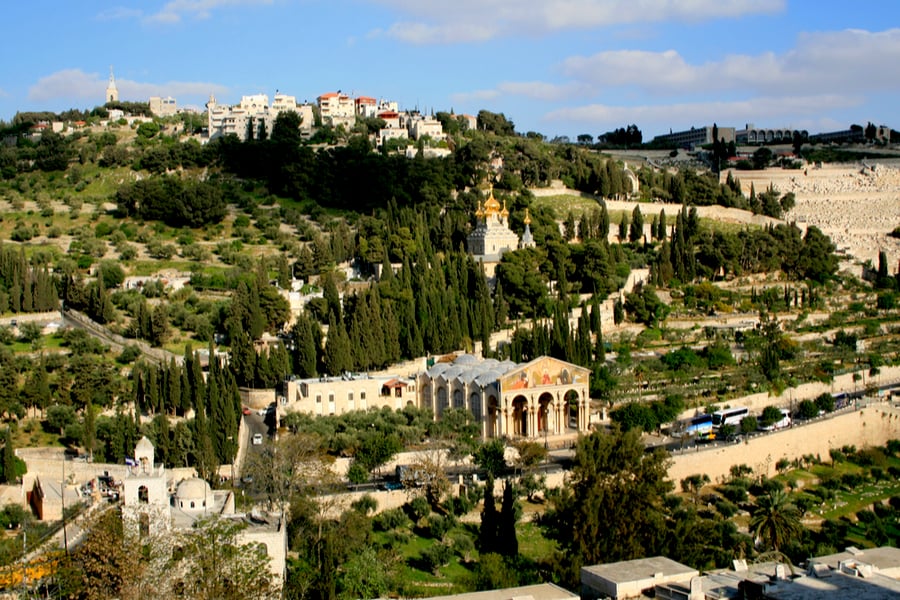
Mount of Olives with the Church of all Nations, Jerusalem. Photo credit: © Shutterstock
In this respect, Israel is truly a Holy Land - for it is the land he lived in quite ‘normally’ (for the most part, anyway), amongst the Jews of the day, for his entire life. No wonder, then, it can feel quite surreal, making a trip (as a pilgrim) to this part of the world. This article is here to help you plan your trip to Israel and to answer some of the many questions you might have. These include “What was Israel like in Jesus’ days?” and “Where was Jesus crucified and buried?” It will also give you an idea of the ‘Holy Land map’ of that time, look at Jesus’s life in Galilee and delve into his final journey to Jerusalem.Plan a Trip to Israel in Jesus’ Footsteps
The Gospels of Matthew, Mark, Luke, and John give us a fair idea of where Jesus spent his days and this has also been confirmed by the excavation of archaeological sites mentioned in the Bible. To help you plan your next trip to Israel, here we want to focus on two specific geographical regions where Jesus lived and preached - the Galilee and the Jerusalem area. Of course, these are just two of the many regions Jesus spent time in Israel but...
Of course, there are more than 10 places where Jesus walked in Israel, but we wanted to highlight these two because - in theological terms - they really clarify the message he was preaching at that time. Let’s try and do this by providing you with a chronological timeline of Jesus’ life (including his early and formative years, before he became famous for his teachings).
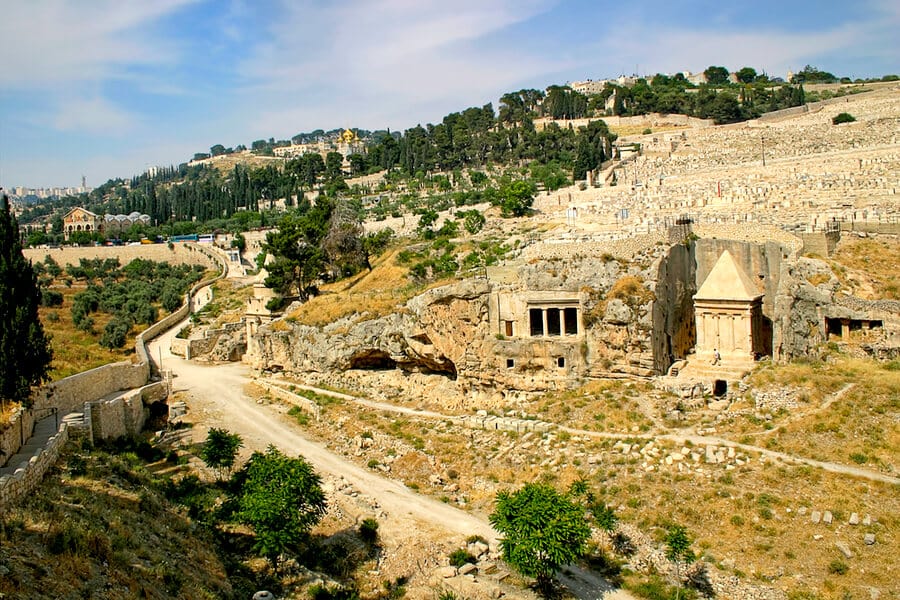
The ancient tombs in the Kidron Valley. Photo credit: © Shutterstock
Timeline of Jesus' life. Birth in Bethlehem
It is estimated that Jesus Christ was born between 4-6 BC in Bethlehem, which is located just six miles from Jerusalem. The Gospels refer to his birth as occurring at the time of King Herod and this is substantiated by non-Christian accounts by Tacitus and Josephus. Today, Bethlehem is a major pilgrimage center, where it is possible to visit a number of sites connected with this monumental event. The most important of these is the Church of the Nativity, the oldest church in daily use, and an incredibly sacred site for Christians. A visit to the Milk Grotto and Shepherds' Field is also recommended, either independently or as part of a visit with a tour of Bethlehem.
Early Years in Nazareth
Jesus spent the first months/years of his life, after his parents Joseph and Mary, fled with him to Egypt, to spare him from certain death warned off by an Angel that appeared to Joseph in a dream - King Herod’s decree had been to slay all baby boys born under the age of 2 in Bethlehem. Historians and theologians are unclear as to how long the family spent in exile; it could have been somewhere between a few months and several years.
The family returned home to Nazareth (in northern Israel) after Herod’s death. We do not know too much about Jesus’ childhood and early adolescence there although, since his father was a carpenter, it is possible that he was involved in construction projects (he learned skill and hard work from his father). It is believed he lived there until he was around 30 years old, when he then began traveling around the wider area, including the Galilee, preaching the word of God to locals and urging them to change their ways.
Today, Nazareth is a popular place for Christian pilgrims, the most popular site of which is the Basilica of the Annunciation (believed to be the home of Mary and where the Angel Gabriel appeared to her, announcing that she would give birth to the Messiah). On the grounds of the Basilica is the Church of St. Joseph, marking the site thought to be Jesus’ childhood home. Walking the streets of this ancient city and exploring Nazareth churches and other sites, as part of a tour of Nazareth, is a wonderful way to get a sense of all this.
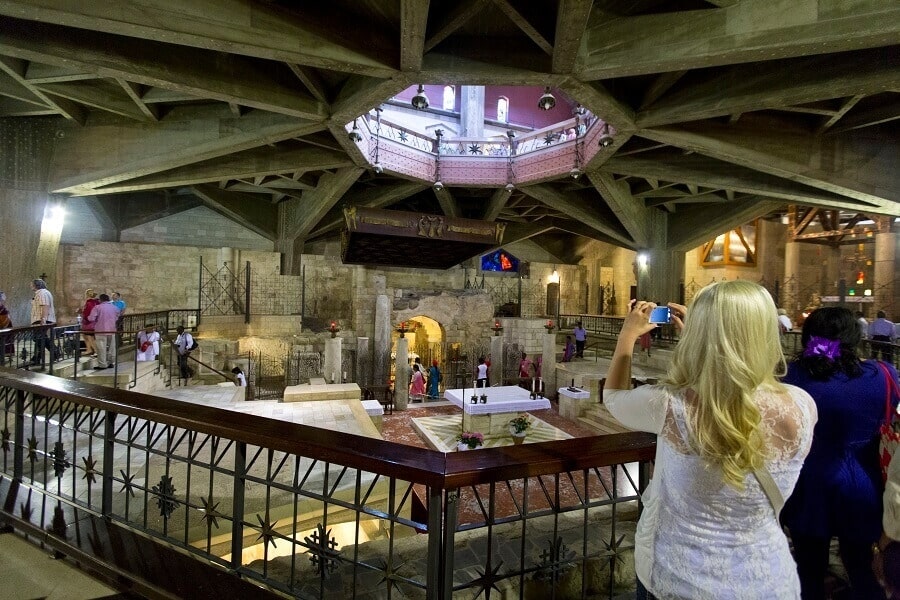
Interior of the Church of the Annunciation, Nazareth. Photo credit: © Shutterstock
Jesus’s Ministry in Galilee and the Miracles he Performed There
The years Jesus spent around the shores of the Sea of Galilee (today around 30 minutes drive today from Nazareth) are well known for many reasons. It was here that Jesus preached about God’s love and the Kingdom of Heaven. It was also where he recruited his twelve disciples - fishermen - urging them to put down their nets and follow him. And it was here that he performed a series of miracles which remain famous to this day - walking on water, raising a man from the dead, and multiplying two fishes and five loaves of bread into food sufficient for a crowd of five thousand.
Galilee is home to a number of beautiful churches of Jesus' Ministry which no pilgrim should miss seeing. These include the Church of the Multiplication in Tabgha, the Church of the Transfiguration on Mount Tabor, and the Church of Beatitudes - where Jesus gave his famous Sermon on the Mount.
It is also home to Yardenit - the famous Baptismal site where it is believed Jesus was baptized by John - and Cana, the village where Jesus notoriously performed the miracle of turning water into wine at the wedding of a poor couple. Taking a Christian Galilee tour is an ideal way to see the Christian sites in Galilee, and to get a real feel for the places he preached.

Sea of Galilee. Photo credit: © Shutterstock
Jesus in Jerusalem - From Arrival and Arrest to Crucifixion and Resurrection
Jerusalem, arguably, is the most sacred of all cities in Israel for Christians for this is where Jesus was not just killed but buried and then resurrected. Here we look at Jesus’s road to Jerusalem, and the events that took place there, on the Mount of Olives, before his arrest and death, and his walk to Calvary, the point at which he was nailed to a cross and died, several hours later.
Palm Sunday - it was on this day that Jesus triumphantly entered the city of Jerusalem, riding on a donkey, as his supporters cheered him, waving palm branches and shouting ‘Hosanna’ to their King. There is a Palm Sunday Procession Tour which one can join each year.
Holy Thursday - this day commemorates the Last Supper when Jesus broke bread with his disciples and washed their feet, as a gesture of humility. This is also the occasion on which Jesus was betrayed by his disciple Judas, in the Garden of Gethsemane.
Good Friday - this is by far and away the most solemn day of the year for Christians since this is when Jesus took his final walk, along the Via Dolorosa (‘the Way of Sorrows’) before arriving at the site where he would suffer an agonizing death at the hands of the Romans.
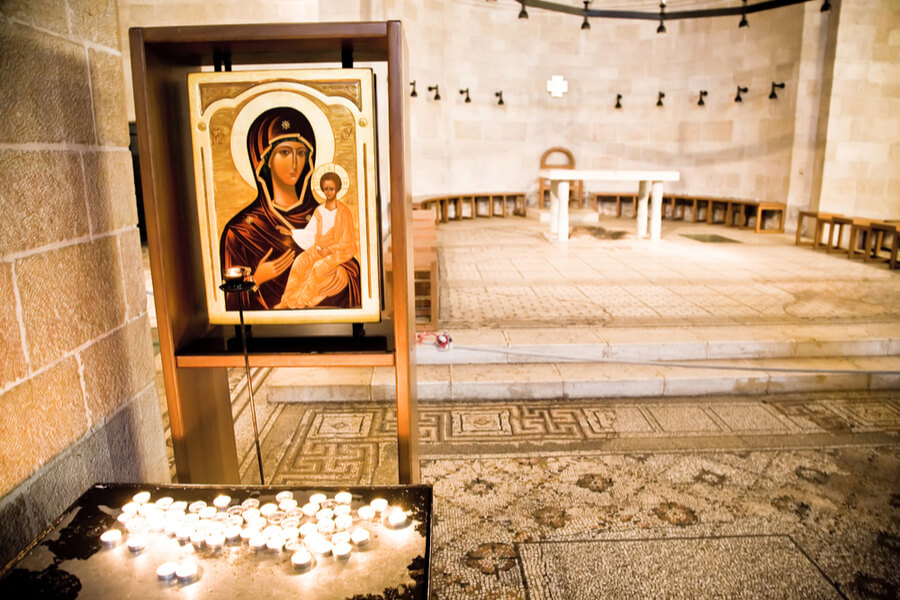
Church of Multiplication, Tabgha, Israel. Photo credit: © Shutterstock
Each Easter in Jerusalem, thousands of pilgrims recreate this solemn procession, following in the footsteps of Jesus, stopping along the way at the various Stations of the Cross (where Jesus paused, to rest briefly). The procession culminates at the Church of the Holy Sepulchre, inside which are further stations of the cross. Masses are held at churches across Jerusalem.
Easter Sunday - this joyous occasion celebrates the resurrection of Christ and all across Jerusalem, and the Holy Land, sunrise services are held (often after all night Vigils). According to the Gospels, Mary Magdalene, along with some of Jesus' disciples, discovered that the tomb in which his body had been placed was now empty.
For Christians, this death followed by resurrection is indicative of new birth and salvation. The Paschal greeting is recited by Priests and Ministers - ‘Christ is Risen” - to which the congregation responds “He is risen indeed, hallelujah.” Visiting Israel during Easter is an unforgettable memory in the life of every Christian.
Yardenit baptismal site. Photo credit: © Shutterstock
Places of Historical and Religious Interest in Jerusalem
Can you visit the place where Jesus was buried? Unequivocally, the answer is yes. There is more than one site associated with his burial - the first, of course, is the Church of the Holy Sepulchre, located in the Christian Quarter of the Old City This has been a major pilgrimage site since the 4th century, and inside its enormous, grandiose interior are several chapels, the Anointing Stone and Calvary, the very spot where Jesus is believed to have been crucified.
The church has withstood Byzantines, Crusaders, and Ottomans, and the enormous wooden arched doors are opened each day by a key made of iron, by a family that Saladin entrusted with it after he reclaimed this church from the Crusaders.
The second is the Garden Tomb, just outside the City Walls of Jerusalem. It is a rock-cut tomb that was discovered in 1867 and is considered, by some Protestants, to be the spot at which Jesus was buried. The entrance is free but reservations should be made in advance.
Many Christians, when visiting Jerusalem, also spend time at the Mount of Olives. Home to several churches, including Pater Noster, Dominus Flevit, the Church of All Nations (Basilica of the Agony), and the Chapel of Ascension - the spot where Jesus ascended into heaven.

Pater Noster Church, Jerusalem. Photo credit: © Shutterstock
The Message of Jesus
For sure, Jesus’ teachings were extraordinary - by any standards, but particularly by the times of the day - what he preached was radical and counter-cultural. Thousands of people flocked to Galilee and Jerusalem to hear him preach. There, he inspired them and challenged them to shake off old habits and start living different kinds of lives.
Unfortunately, Jesus’ message was sufficiently radical to infuriate and antagonize many of the religious leaders of the day. They conspired with some of Jesus’s closest followers (including his disciple Judas) to have him arrested for blasphemy, knowing all too well that the price he would pay would be death. Ultimately, this was the case - Jesus was put on trial, condemned by Pontius Pilate, and executed by crucifixion in around 30 AD.
However, his resurrection proved to his supporters that Jesus and his message could not be silenced. According to the Gospels, he rose from the dead and appeared to more than 500 people in the weeks following his resurrection. As is written in the Gospel of St. Luke, he was then carried up into heaven, hidden from view by a cloud. His disciples understood then that he was to be exalted and sit at the right hand of God. Today, the resurrection is a cornerstone of Christian teaching.
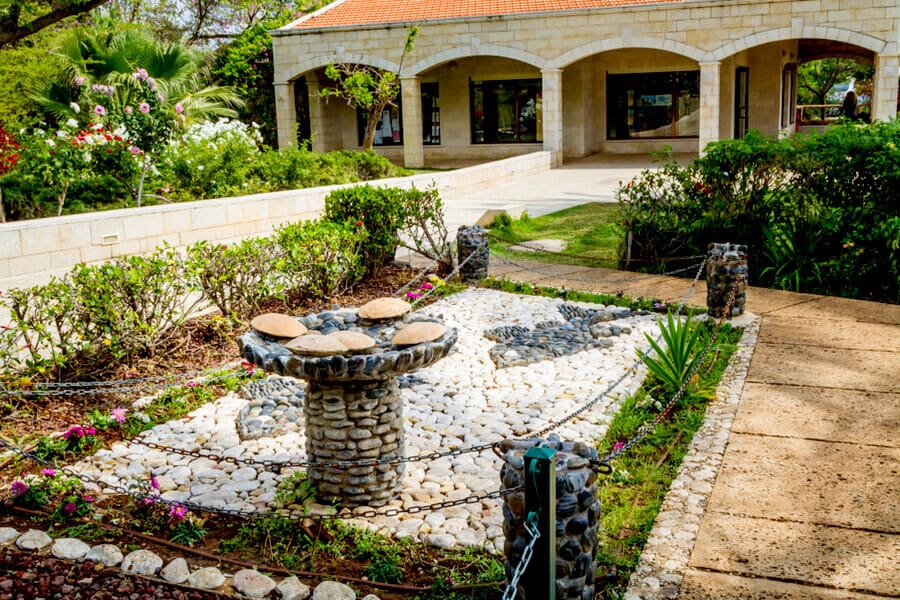
Garden of the Church Of The Beatitudes, near Sea of Galilee, Israel. Photo credit: © Shutterstock
 Login / Register
Login / Register
 Contact Us
Contact Us
 Certificate of Excellence
Certificate of Excellence Guaranteed Departure
Guaranteed Departure Low Prices Guaranteed
Low Prices Guaranteed 24/7 Support
24/7 Support




